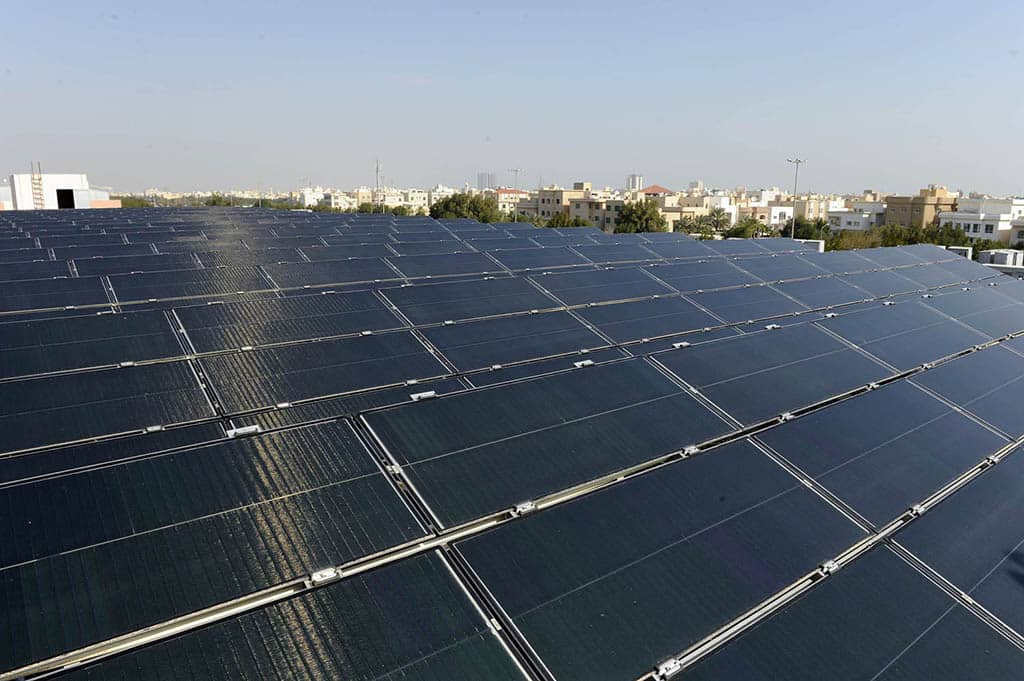03/07/2024
03/07/2024

KUWAIT CITY, July 3: Amid a recent electricity crisis, the government is revisiting proposals to harness solar energy by installing panels on the roofs of government buildings. Although these initiatives have been discussed for years, their implementation remains limited.
A report by a local daily highlights the potential of this proposal in mitigating the increasing energy consumption, which poses a risk of recurring power outages. Kuwait's government buildings, including schools, mosques, and health centers, total 3,220, each with an area of at least 600 square meters. This provides a combined area of 1.5 million square meters, which, according to electricity experts, could save about 25% of the total consumption of government buildings in Kuwait.
The Ministry of Electricity, Water, and Renewable Energy is actively working to manage electrical loads during peak periods, especially in what is being called the hottest summer in recent years. Part of their strategy involves the Gulf interconnection network, which supports Kuwait's electrical grid with surplus electricity from GCC countries.
Kuwait, blessed with abundant sunshine year-round, has significant potential for generating electricity through renewable energy. The Shagaya Renewable Energy Plant, a key government project led by the Kuwait Institute for Scientific Research in cooperation with the Ministry of Electricity, exemplifies this potential. Located on 87 square kilometers, the plant's first phase includes three projects: a 50-megawatt thermal heating system using sunlight, a 10-megawatt wind energy system, and a 10-megawatt photovoltaic panel system. This phase occupies only 4 square kilometers, leaving ample room for expansion, with an expected total production capacity of over 3,000 megawatts.
The recent power outage on June 20 highlighted the urgent need for alternative energy solutions. Some government agencies have already taken steps to reduce energy consumption, such as the Ministry of Education advancing the teachers’ holiday to close schools and save electricity.
Given the number of government buildings, including 1,275 schools, 1,823 mosques, and 122 health centers, there is a vast amount of rooftop space available for solar panel installations. If each building could provide 600 square meters for solar panels, it would collectively offer around 1.5 million square meters, potentially generating 25% of the electricity consumed by these buildings.
Several schools have already implemented photovoltaic power stations. For instance, the Mowdi Burjas Al-Sour School has installed 474 solar panels with a production capacity of up to 312 kilowatt-hours, providing 20% of the school's electricity needs.
The Shagaya Renewable Energy Plant project demonstrates significant environmental benefits, saving over 12 million barrels of oil that would otherwise be burned to produce electricity and preventing more than 5 million tons of carbon dioxide emissions.
The government's push to utilize solar energy on rooftops is a promising step toward addressing Kuwait's electricity crisis. With proper implementation and expansion of these initiatives, Kuwait can significantly reduce its reliance on traditional power sources, enhance energy security, and contribute to environmental sustainability.


